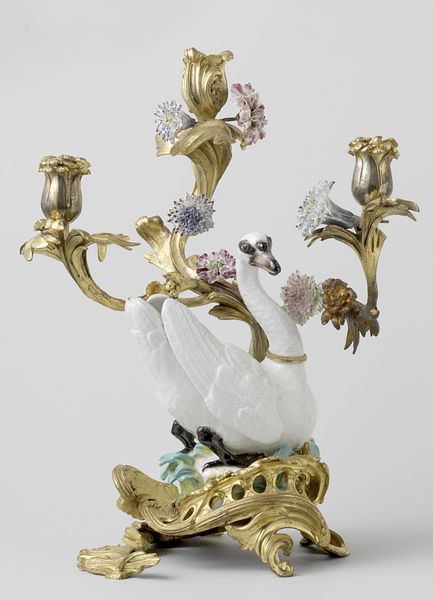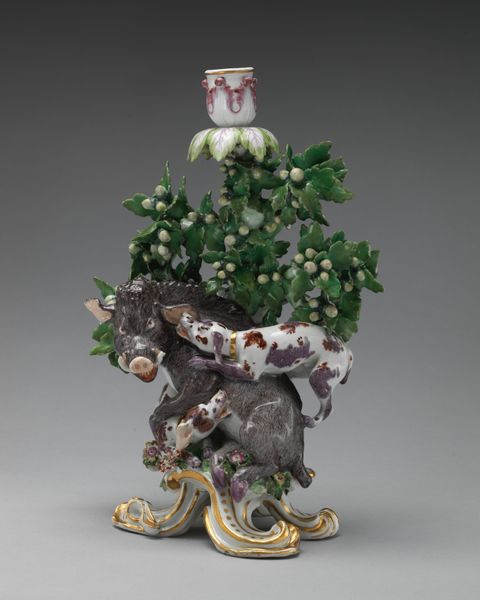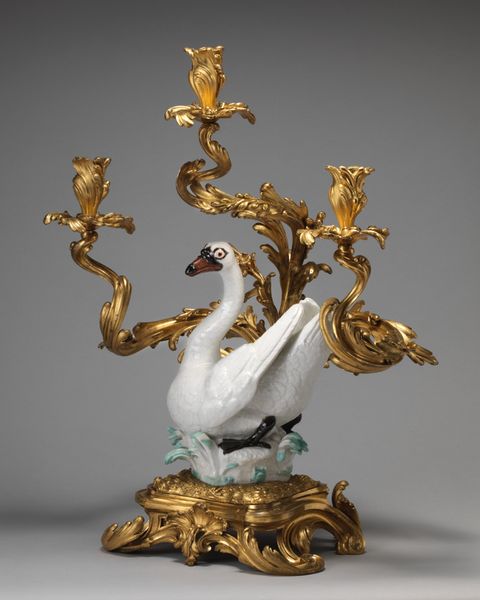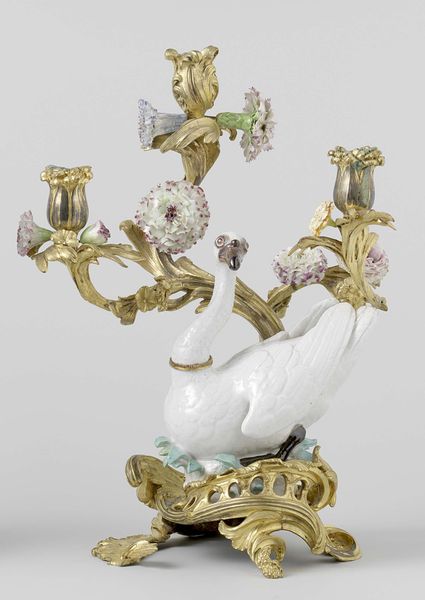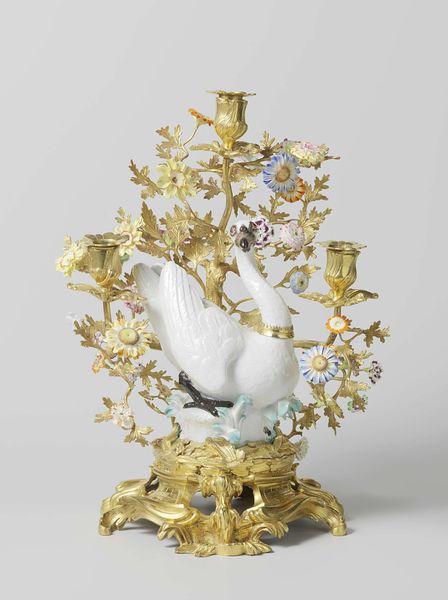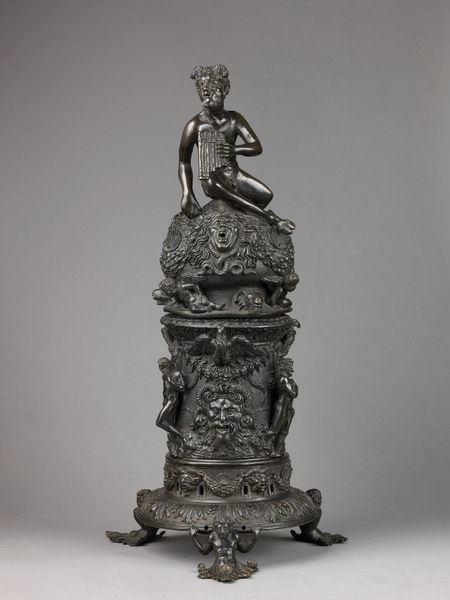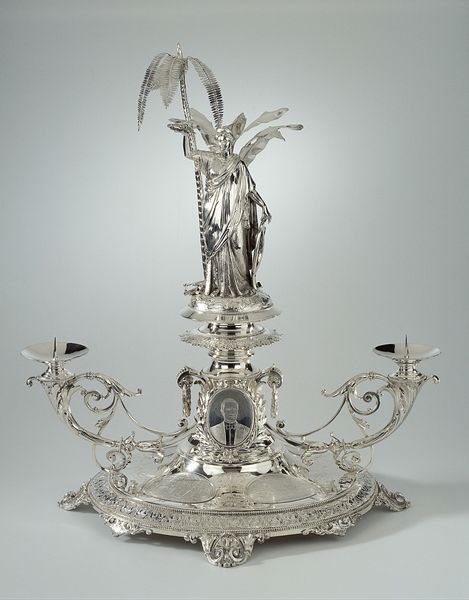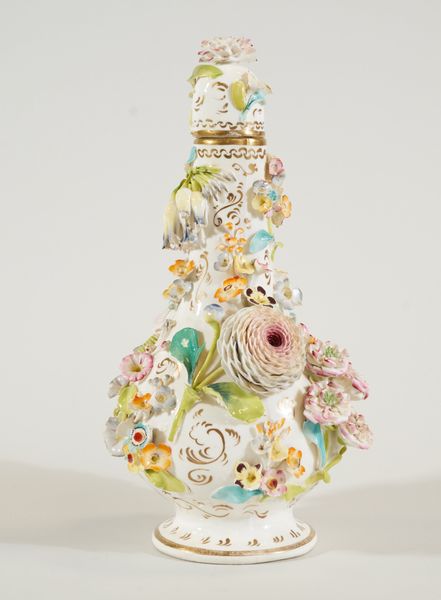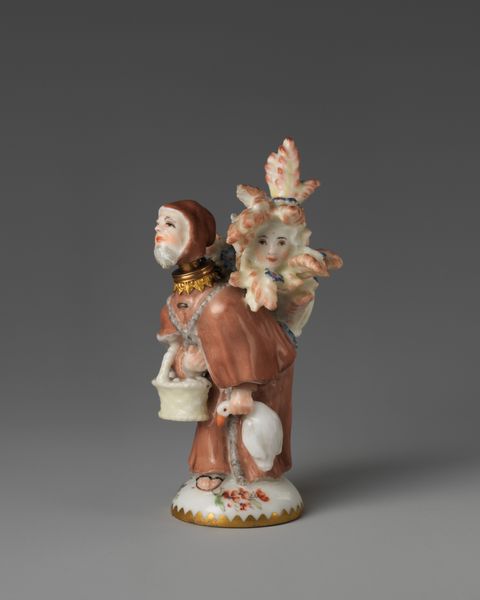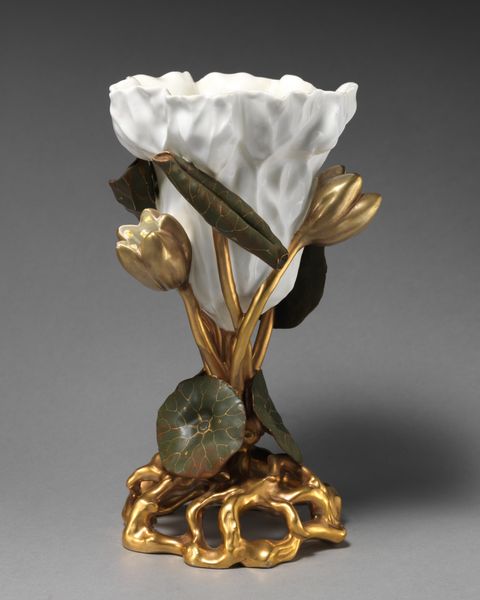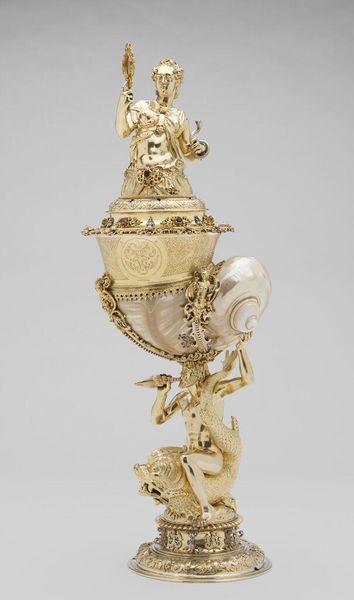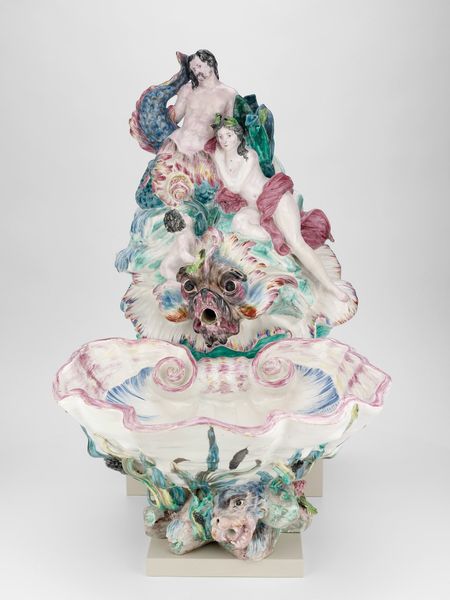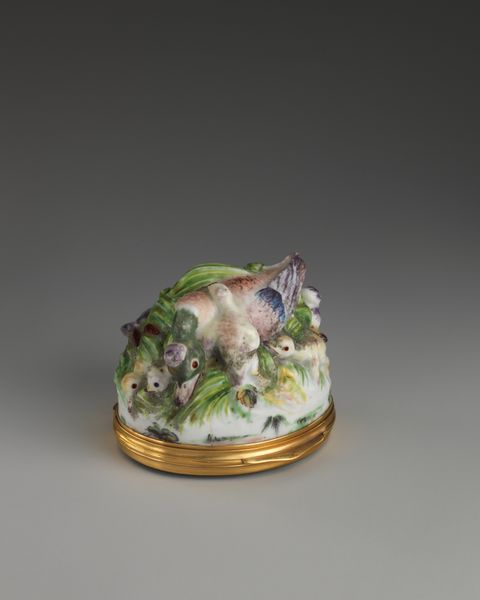
ceramic, porcelain, sculpture
#
baroque
#
sculpture
#
ceramic
#
bird
#
flower
#
porcelain
#
sculpture
#
decorative-art
Dimensions: Height: 18 in. (45.7 cm)
Copyright: Public Domain
Editor: Here we have "Jay (one of a pair)" made around 1740 by Meissen Manufactory. It’s porcelain, and there's such incredible detail; you can even see the individual feathers of the bird! How do you read a piece like this, with its highly detailed representation of nature in ceramic? Curator: Looking at this Jay sculpture, the initial draw is undoubtedly the technical virtuosity. Consider the resources needed to produce such a piece: the kaolin clay itself, the pigments for the elaborate overglaze painting, the wood and coal necessary for firing the kiln… These factors speak to the social context of the time. Who commissioned this object, and what did its possession signify? Editor: So, less about the bird itself and more about how its existence was made possible? Curator: Precisely. Porcelain production in 18th-century Europe was heavily intertwined with aristocratic patronage and mercantilist economies. Meissen porcelain was a direct challenge to the Asian porcelain trade, and objects like this, however decorative they may seem, were also signifiers of economic power. Editor: That’s a completely different way of seeing it. It's not just pretty; it's about labour, material, and consumption. Curator: Yes, think about the highly skilled artisans who painstakingly molded and painted each delicate element. Their labour is embedded within this object. It also speaks to evolving European taste, doesn't it? Why do you think this avian theme became popular? Editor: Well, I guess it makes you question what we even consider 'high' art, and how craft plays into that definition. Looking at art through this lens almost makes it a historical document in itself. Curator: Absolutely. Focusing on materials and production reveals a lot about the society that produced this Jay. Hopefully it has added another layer to your appreciation of the piece!
Comments
No comments
Be the first to comment and join the conversation on the ultimate creative platform.
